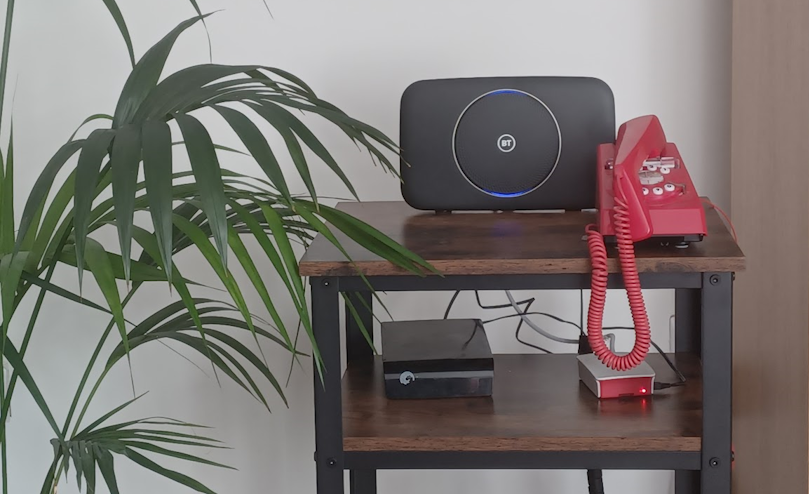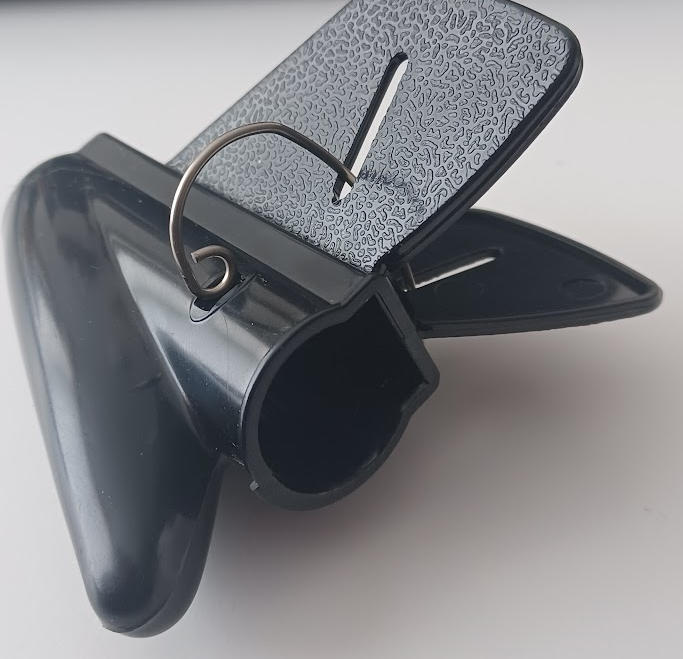This post deals with upgrading my BT Hub, from HH5 to a Smart Hub. It also contains notes on Wi-Fi signal strength and coverage.
I have got to the point where my home wifi’s weakness in the backroom is unacceptable. The network connection to the web server is also reporting failures regularly, almost once/day. My first thought was for an extender/repeater and/or replacing the Hub.
I need to discover if I can upgrade the router, which is/was a BT HH 2. The answer is of course, yes! The current offering, “Halo with complete wifi” comes with a booster/extender.
Upgrading the Hub
This is a box swap and so it comes with a new SSID and a new IP address as the BT DHCP server allocates a new address. It seems that the devices have retained their ip addresses at least the raspberry pi has.

The local addresses for connected devices remain the same, so my shortcuts still work.
The port forwarding rules are not copied forward, and the new interface is less friendly. i.e. it used to specify the ports for you from a named service. I need http[s] 80/443, imaps 993, smtp (maybe) 587, and transmission 49152 – 65535, all of which I had to look up. Despite taking paper backups of the rules, they did not document the ports.
I use no-ip as my DNS provider and it took a little while for the dynamic update client (DUC) running on my server to notify them of the changed address, but this seems to be working now. i.e. once the https rule was specified everything worked as expected.
My test of the disk worked well. The smarthub needs to be addressed by IP number and not name and the share is USB1, previously it was something else. The file explorer shortcuts need to be rebuilt as they have the share name embedded in the location.
Tidying the cables
I bought myself a cable tidying kit; the picture above does not do it justice, but its cool and declutters the space. To insert the cables into the loose sleeve, you need an inserter. The cables are laid through the hole and the spigot is placed at one end of the sleeve and drawn through the sleeve and down the cables. See, which is a soft advertisment
The spring on the inserter fell off and I had to reassemble it. Here’s a picture that shows how.
Power and time control
Is it worth putting standby devices on a timer to save energy? A harder question to answer than to ask.
The short answer is it depends on the draw of the managed device and the time/day you want it on and off. This site, states that the timers, draw 1w if mechanical, and 2w if electronic. To answer the question we need to know the standby draw of the device or the live draw in the case of always on devices. To calculate the savings, we also need to know how long the device will be off.
My first calculation is for the web extender, for which I cannot find the power draw; it is an always on device.
Daily Draw = ((SD x 24) + (DD x H))
Where SD = Switch Draw, DD = Device Draw and H = Hours/day on
Without the switch, and always on, the daily draw is 24DD
Therefore, calculating the time,
if (DD x ( 24 – H) > 24 SD)
i.e. the power drawn by the device while off is greater than the power drawn by the switch all day, then it should be used.
The power draw of the web extender aka web disk is 0.5w, so the answer is no.
A note on WiFi Range
While looking for an answer to my problem I did some research on the technologies available and made some notes. See below …
Then I may need to consider augmenting the network hardware; there seem to be two technologies and two architectures, although only three solutions.
I was set of on this track by looking at this page on extenders from
This video does a good job in explaining the difference between them, powerline adaptors, vs extender’s vs a mesh network. There is it seems a powerline adaptor vs an extender. It seems that the powerline solution is adapted for rj45 ethernet. The adaptor/extenders would seem to be best for zero connectivity. A Mesh network, involves a second router, the author of the video linked to above recommends them, but also recommends replacing your ISP router.
Gary explains, explains WiFi extender; he notes that they implement a 2nd SSID, and auto-switching will depend on your connected device’s capability. He notes that they will degrade speed because they have to read and write each message irrespective of the nature of the device transaction. He illustrates that performance can degrade quite quickly. He concludes that these technologies are best for eliminating dead spots. He points out in a later video that many extenders come with an rj45 port and can thus be used to connect the device to the LAN via ethernet cable.
Cat 6 is better than wifi, wifi is probably better than power circuits, auto switching is an issue. I shan’t be installing CAT6
Image taken from https://www.expertreviews.co.uk

While on my way to upgrading the Hub, I considered if the telephone cable between the two rooms might be part of the answer; but I am not sure if it works or is good enough. There are two ariel sockets in the flat, but I don’t know the topology. I need to test the phone line.